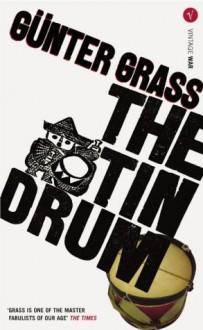
bookshelves: re-read, spring-2010, dodgy-narrator, wwii, published-1959, noir, nobel-laureate, magical-realism, satire, nazi-related, paper-read, fradio, radio-4x, spring-2015, re-visit-2015, film-only, incest-agameforallthefamily, play-dramatisation
Read from January 01, 2008 to April 13, 2015, read count: 2

Re-visit 2015: Günter Grass, Nobel-winning German novelist, dies aged 87
Description: Danzig in the 1920s/1930s. Oskar Matzerath, son of a local dealer, is a most unusual boy. Equipped with full intellect right from his birth he decides at his third birthday not to grow up as he sees the crazy world around him at the eve of World War II. So he refuses the society and his tin drum symbolizes his protest against the middle-class mentality of his family and neighborhood, which stand for all passive people in Nazi Germany at that time. However, (almost) nobody listens to him, so the catastrophe goes on...

Did you spot Charles Aznavour in there!?
Powerful film of a powerful novel.
 Sherbet fizz
Sherbet fizz


Re-Read details: As Hitler rises to power, three-year-old Oskar decides he doesn't want to grow up. Stars Phil Daniels and Kenneth Cranham. Broadcast on:
blurb - Classic novel of the rise and fall of Hitler as seen through the eyes of the dwarfish narrator, Oskar Matzerath.
Not caring for the world he is growing up in, a small boy determines to remain a child. The epic sweep of Grass' novel satirises German nationalism and the rise and fall of the Nazi movement.
___
Brilliant portrayal of a youngster in denial of real-life. This theme has been loosely followed up in Cabaret and Pan's Labyrinth.

 Log in with Facebook
Log in with Facebook 



 Landsberg prison where Hitler read An outline of Human Genetics and Racial Hygiene by Fritz Lenz"
Landsberg prison where Hitler read An outline of Human Genetics and Racial Hygiene by Fritz Lenz"  Wewelsberg - the occult centre of SS - In the large dining room, in direct echo of the English King Arthur, he installed a round table for seating his twelve senior 'knights'."
Wewelsberg - the occult centre of SS - In the large dining room, in direct echo of the English King Arthur, he installed a round table for seating his twelve senior 'knights'."  The ritualised SS naming ceremony for babies born at Lebensborn homes."
The ritualised SS naming ceremony for babies born at Lebensborn homes." 






